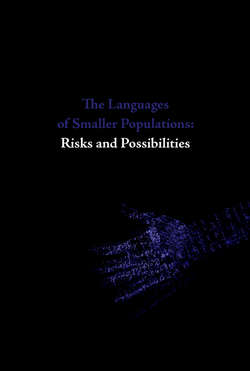Читать книгу The Languages of Smaller Populations: Risks and Possibilities. Lectures from the Tallinn Conference, 16–17 March 2012 - Urmas Bereczki - Страница 8
На сайте Литреса книга снята с продажи.
Opening Words
ОглавлениеYour Excellencies Ene Ergmaa, Speaker of the Estonian Parliament (Riigikogu), Former First Lady Ingrid Rüütel, distinguished participants, ladies and gentlemen! I welcome you to the Conference on „The Languages of the Smaller Populations: Risks and Possibilities.“
First and foremost, I would like to thank you for having accepted the invitation to participate in this conference. Our topic is timely; it is, in a sense, „in the air.“ Topics of similar themes are presently the focus of various other conferences taking place in Estonia and abroad.
Our conference is unique in that our goal is to analyze the relationship between language and culture from unconventional and often astonishing points of view via a variety of different disciplines and in direct relation to current situations. Building on this foundation, our conference will also consider the prospects for the survival of the languages of smaller populations. Unfortunately, we will not be able to focus on as much of the historical background of these problems as we had originally planned due to the inability of some of our original participants to ultimately attend the conference. Nonetheless, this conference will address the realities of a far larger geographic territory than we had originally dared hope. The conference will span territories and related language concerns from the Far-East, across Eurasia, through Europe to British Isles, Greenland, and across the Atlantic to Mexico.
The issues associated with the languages of smaller populations are much broader and more global than it may seem on the surface. The scientific and cultural dimensions associated with the languages are themselves complex. We think and create culture in different languages, languages which have a continuous influence each other. The result is an extremely complicated network consisting of an immense number of different components. If one component, one single language, falls out of this system, its loss will influence the entire network, although the system itself would survive. However, we must consider what the consequences would be if hundreds or even thousands of languages were to fall out of this system. The Udmurt poet, Anatoli Petrov puts forth a similar question in his poem „In the Udmurt Language.“
Roughly translated, he asks:
Why do some wish not
To understand the simple truth:
If all the small rivers dry
Will not the large ones follow suit?
(This poem, in its entirety, can be found in the our anthology, Because I Am/Sest olen. This work consists of a collection of poems which carry the common theme of the „mother tongue.“)
In other words: is it not inevitable that the extinction of the languages of smaller populations will ultimately result in the loss of some much more commonly spoken languages? Although this question will not be addressed in a scientic way here it is our hope that the lectures you are soon to attend will help broaden the perspective from which we usually approach it. Furthermore, we hope the lectures will encourage further thought concerning the sustainability of languages and the questions concerning the connections between languages and different cultural phenomena. May all participants find the lectures interesting and thought-provoking and may stimulating discussions ensue. May you all have a pleasant stay in this fine city of Tallinn.
Last but not least, I would like to thank our co-organizers for their outstanding work with the members of the European Commission Representation in Estonia, the Estonian Ministry of Education and Research, the Non Profit Organisation Fenno-Ugria and our supporters from the Finnish, Danish and French Institutes, the British Council as well as from the Latvian and Hungarian Embassy. Without your help, this conference would not have been possible.
Urmas Bereczki
Director
Hungarian Institute in Tallinn
